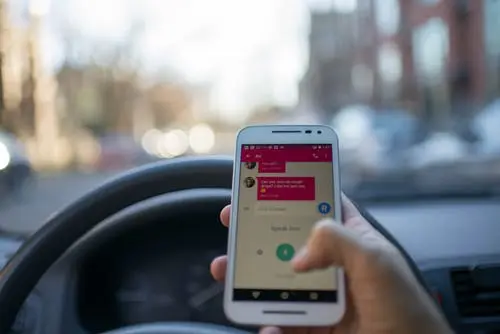Amendments to the Highway Traffic Act" that target distracted driving are welcome and necessary, Barrie-area personal injury lawyer" Steve Rastin says.
"Generally speaking, the volume of serious accidents is dropping drastically because of better drivers, less drunk driving, and autonomous driving safety protocols," says Rastin, managing partner with" Rastin Trial Lawyers. "The exception is distracted driving, which is now the leading cause of road accidents and deaths."
Rastin points to the Ontario Provincial Police 2017 mid-year statistics, which shows that 6,390 collisions and 47 deaths were a result of inattentive driving.
"That is more than the number attributed to speeding and impaired driving charges combined," he says.
The Ontario government has responded to the problem with the" Cannabis, Smoke-Free Ontario and Road Safety Statute Law Amendment Act, which received royal assent late last year and is awaiting proclamation.
The Act increases penalties for the offence of "driving while a display screen is visible to the driver, or driving while holding a hand-held wireless communication device or similar device." The fine will now range from $500 to a maximum of $3,000. The driver's licence will also be suspended for a period between three and 30 days," CityNews" reports.
"The concept that by the third offence there is a fine of $3,000 and a 30-day suspension, is a big step forward," Rastin says. "There is deterrence value in potentially losing your licence for a month and paying a substantial fine."
He equates the current rally against distracted driving to the 1970s campaign against drunk driving.
"Today, people won't even think about driving while drunk, but they will read a text on their phone. There needs to be increased awareness that this behaviour is harmful and more of a public safety threat than drunk driving."
People's reliance on smartphones is not going away, Rastin says.
"It's surprising how addictive the technology has become," he says. "People are incapable of putting the phone down for an hour or two at a time."
Rastin says this is a huge issue for the police and the medical community. As a result, other pieces of legislation are also addressing the phenomenon.
Bill 11, the" Phones Down, Heads Up Act, 2018, which has passed first reading, prohibits pedestrians from holding or using devices while crossing a road. There are also laws prescribing safe texting zones and exemptions for first responders.
Recent improvements in automotive technology have also had an impact.
"As cars become safer, some engineers say it's promoting distracted driving," Rastin says. "There is adaptive cruise control and lane correction. Some cars automatically slow down when they get too close to the vehicle ahead.
"There is less to do in a car, so it is easier to look at a phone," he adds.
Ontario is a leading jurisdiction in allowing autonomous vehicles, Rastin says. "I don't think the government can stop the advance of technologies. It's only going to continue."
The legal profession is also adapting to technological changes, but lawyers struggle to prove that distracted driving was the cause of injury to their clients.
"With drunk driving, you can get a blood alcohol reading," Rastin says. "With distracted driving, in the absence of an admission, you can look for data in the phone if you are consulted right away. But most clients consult you months afterwards, so you're asking the question in court years from now.
"Unless there is a smoking gun "” such as someone causing an accident when they are in the middle of typing a message "” it's difficult to prove," he says. "Ideally, individuals injured in accidents should seek legal representation right away so that steps can be taken to preserve evidence. If that doesn't happen, lawyers should not just accept a driver's denial and request cell phone records, social media records, and anything else that might help prove distracted driving."
Expertise.
Share
Subscribe to our Newsletter

